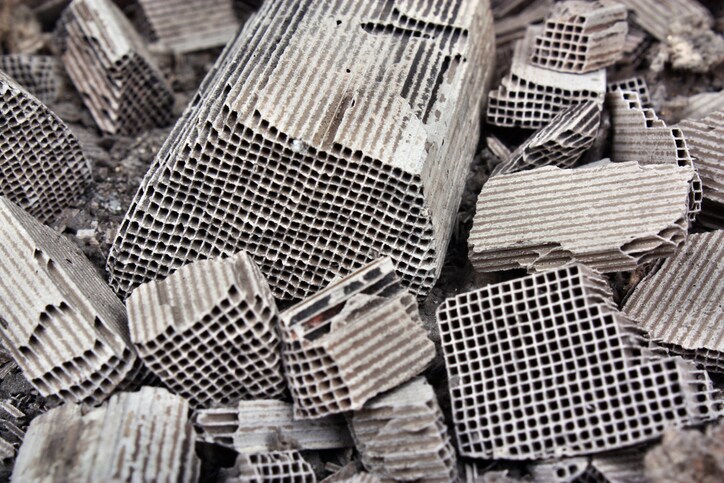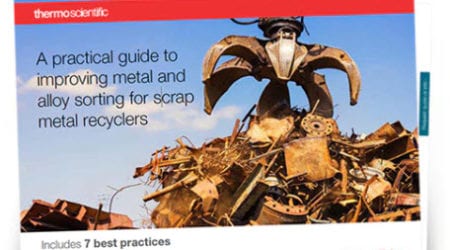 Editor’s Note: We are updating this article as just this past week, a Long Island news station reported that several hundred catalytic converters were captured, along with several million dollars. According to the article, in the last year in the tri-state area, the theft of catalytic converters has gone up over 300%. Why? “It’s the result of the high-priced value of what’s inside those converters: platinum, palladium and the most wanted element, rhodium, which sells for $12,000 an ounce.
Editor’s Note: We are updating this article as just this past week, a Long Island news station reported that several hundred catalytic converters were captured, along with several million dollars. According to the article, in the last year in the tri-state area, the theft of catalytic converters has gone up over 300%. Why? “It’s the result of the high-priced value of what’s inside those converters: platinum, palladium and the most wanted element, rhodium, which sells for $12,000 an ounce.
Here’s our previously written article that also addressed the theft of catalytic converters because of those precious metals:
We have written several times over the past few years about the issue of catalytic converters being stolen and sold to scrap metal recycling companies for hundreds of dollars in cash for each converter. Unfortunately, the topic is again in the news with several cities reporting this particular crime spree during the same week.
A Boston news station reported that thieves are now being choosy and targeting certain cars for their catalytic converters. Police from the city of Cambridge (home to prestigious colleges and biotech companies) noted 40 incidents all involving old Toyota Prius models. A Denver Police Department received 108 reports of catalytic converters stolen in January alone, with most recent thefts involving shuttle buses and trucks. Sioux Falls (South Dakota) law enforcement officials asked for the public’s help to solve 40 to 50 catalytic converter thefts in their city (though thieves are not so picky there and no car or truck is safe from theft). Greensboro, North Carolina, police reported that over 300 converters have been reported stolen in less than six months. (One insurance agency has offered some useful tips to prevent catalytic converter theft.)
Why the uptick? Those pollution control devices can fetch anywhere from $150-$1200 depending on the size of the converters. The converter is made of ceramics or metals coated with chemicals and a combination of platinum group metals (PGMs) that includes platinum (Pt), rhodium (Rh) or palladium (Pd). The recyclers collect thousands of converters, grind those into powders and sell the powder to precious metal refineries where the precious metals are extracted and resold for thousands of dollars an ounce, depending on the metal and its market price at the time of sale. (Read Catalytic Converter Recycling Is Still Big Business.)
According to the USGS, about 115,000 kilograms of palladium and platinum was recovered globally from new and old scrap in 2021, including about 53,000 kilograms recovered from automobile catalytic converters in the United States. The recycled precious metals are used in catalysts for bulk-chemical production and petroleum refining; dental and medical devices; electronic applications, such as in computer hard disks, hybridized integrated circuits, and multilayer ceramic capacitors; glass manufacturing; investment; jewelry; and laboratory equipment.
To determine the value of catalytic converters and avoid considerable financial losses, recyclers need to quickly and accurately determine the contents of Pt, Pd, and Rh in spent catalytic converters at the time of purchase or before re-selling it to a bigger recycling business or a precious metal refinery. But there is no technique for analyzing non-homogeneous materials like catalytic converters directly without sample preparation. Therefore, the collected catalysts with ceramic substrate undergo a “de-canning” operation, which is the extraction of the honeycomb-structured ceramic material from the steel case. All of the ceramic is then sorted crushed, milled, and mostly blended with other catalysts.
In contrast, converters with a metallic substrate are first shredded or milled, and then the metallic parts are separated using magnets and winnowing from the wash coat powder containing precious metals. Because of this enrichment, the PGM content of these wash coat samples is usually much higher than that for milled ceramics.
In both cases, the materials are pulverized and loaded into sample cups or sample bags for analysis, and then analyzed using handheld x-ray fluorescence analyzers.
We evaluated x-ray fluorescence (XRF) analysis as compared to lab assays for accurate analysis of the metals. To see the results, including the correlation curves, repeatability data, methodology, and comments, read Automotive Catalytic Converters application summary.
Let’s hope that the crime spree is halted, but the converters continue to be recycled when cars are scrapped at the end of their ‘natural’ lives.






For up-to-date information regarding catalytic converter theft in your state, check out: https://www.beenverified.com/data-analysis/catalytic-converter-theft-state-rankings/
Great post. I like it.
nice